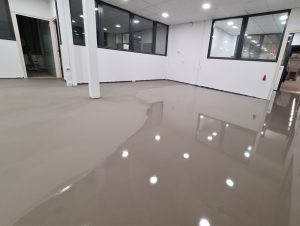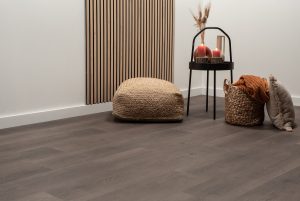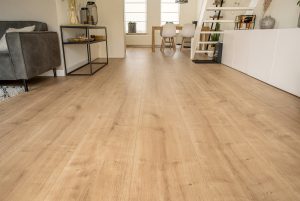Before you lay your dream floor, there are a few things you need to consider. Levelling a floor can be an important step in the process of renovating or installing a floor. After all, a suitable sub-floor is the foundation of your floor. But when is it necessary and why? Find out why you should level a floor can be important and in what situations it is needed.

Why levelling is required?
Why is levelling so important anyway? Well, it’s not just about levelling the surface. It is the key to a durable and perfect floor installation. Levelling removes all bumps, dents and cracks, giving you a nice flat surface on which your flooring will sit perfectly. This prevents problems such as loosening, cracking or warping of the floor. In essence, levelling ensures that you have a solid and reliable foundation on which to build your dream floor.
Should I level the floor in a newly built house?
Don’t immediately think that you don’t need levelling in a newly built house. Sometimes, even in a brand new house, you need to apply a layer of levelling compound. But why? Because laying floors requires an accurate sub-floor. With dryback vinyl and some click floors, the sub-floor needs to be perfectly level, especially with herringbone click vinyl and herringbone laminate floors because these floors have many joints per square metre. With straight laminate, there is still some room for unevenness in the sub-floor. This is because any unevenness can still be absorbed by a subfloor with sufficient levelling capacity to absorb the unevenness. You also have fewer joints per m2 with a straight floating floor.

Levelling glued floors
With a floor that is glued to the substrate, such as dryback vinyl, there is always a need for levelling. But can’t you just glue directly onto the existing floor? No, even though the poured floor may seem flat and solid enough, gluing directly onto it is not a viable option. This is due to the coarser texture of the standard poured floor.
Laying a floating floor in a new house
Levelling is not always necessary when laying a floating floor, but it does depend on the condition of the existing floor. Any unevenness in the poured sand cement floor can be accommodated by the levelling capacity of the subfloor, usually 2 mm per 2 linear metres. Are the irregularities greater than what the subfloor can absorb? Then you will still need to level the subfloor.
What is included in levelling?
There is a common misconception that standard levelling makes the floor level, but this is not the case. The levelling compound adapts to the shape of the floor, so if the floor has irregularities, standard levelling will maintain them. Sometimes the unevenness in the floor is too great. It is then necessary to level the floor to remove most of the bumps from the floor.
House with wooden floors

In houses built before the 1980s you will often see wooden floors. Levelling a wooden floor requires a slightly different approach to levelling a sand cement or anhydrite floor. So how do you go about levelling a wooden floor? They say a good start is half the battle. This is why it is important to first remove all nails and other irregularities from the wooden floor by hand.
Levelling wooden floors
For large uneven areas in wooden floors, first screw the planks to the floor, then use a special wood fibre primer to fill in the seams of the planks. You can then level the boards with a special wood fibre levelling compound. Note that the floor must be pressure-resistant, so it should not have any springiness.
Dual underlay levelling
Another common solution for levelling a wooden floor is to use a double underlay. This special underlay is laid on top of the wooden floor in a tile-laying process and then glued directly to it. This is not a liquid, but a levelling underlay.

Laying floor on tiles
Are you considering laying a new floor on top of tiled floors? Sometimes it is possible to lay your new floor directly on top of the tiles, for example with floating floors. However, this will depend on the depth and width of the joints between the tiles. When choosing an underlay, it is important that it absorbs any unevenness and protects the new floor properly. Normally this only applies to straight floors. However, if you are installing a floating herringbone floor over tiles, you should first apply a layer of levelling compound. This is because herringbone floors are many times smaller, so there are more planks per square metre. As a result, herringbone floors are more sensitive to unevenness. This also means that herringbone click vinyl floors can tolerate less bounce, which can lead to damage and/or loosening of the joint. Of course, you want your beautiful floor to be stable.
The situations we have discussed are mainly general scenarios. But what if your surface is special or you are unsure whether levelling is necessary? In this case, we recommend that you consult a professional for an expert assessment. After all, a good base is the foundation for your dream floor 😉!






